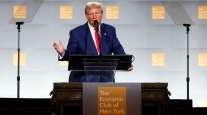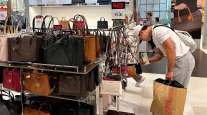Consumer Confidence Rebounds as Homebuying Plans Hit Record

U.S. consumer confidence unexpectedly rose in April to the second-highest level since 2000 as Americans grew more upbeat about both current conditions and the economic outlook, according to figures April 24 from the New York-based Conference Board.
Highlights of April Consumer Confidence
• Confidence index rose to 128.7 (estimated 126) from 127 in March.
• Present conditions measure advanced to 159.6 from 158.1.
• Consumer expectations gauge rose to 108.1 from 106.2.
Key Takeaways
A bigger share of respondents expect to purchase big-ticket items, including cars and major appliances, within six months, while a record 7.8% of respondents said they plan to buy a home. That will support both consumer spending, the biggest part of the economy, as well as housing prices that are already handily outpacing wage gains amid tight supplies.
At the same time, the April report from the Conference Board showed the labor differential, which measures the gap between respondents saying jobs are plentiful and those who say they’re hard to get, narrowed to 22.9 percentage points, a three-month low.
Bigger after-tax paychecks and a still-strong job market — with the lowest unemployment rate since 2000 — are helping to sustain sentiment. The latest results contrast with other signs that consumer and business confidence measures, while still fairly high, are coming off the lofty levels seen in the past year.
Economist Views
“Confidence levels remain strong and suggest that the economy will continue expanding at a solid pace in the months ahead,” Lynn Franco, director of economic indicators at the Conference Board, said in a statement.
Other Details
• 24.5% of consumers said they expect better business conditions in next six months, compared with 23.2% in March.
• Share of households who expect incomes to fall in the next six months decreased to 6.8%, matching the lowest since 2000, from 7.2%; those expecting an increase were little changed at 23.1%.
• Share of those who said more jobs will be available in coming months was 19.5% after 18.9%.
With assistance by Chris Middleton




